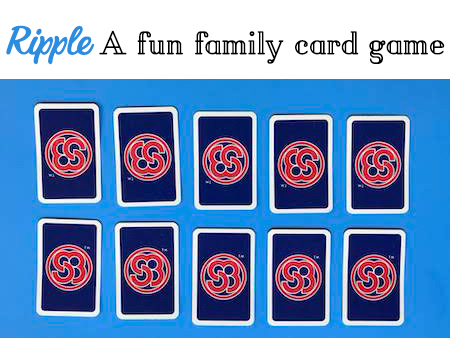
It’s always fun to learn a new card game that you can play with your family. And, it’s awesome when the game is easy to learn and easy to play. That describes Ripple!
To play Ripple, you’ll need one set of Skip-Bo cards for 4-5 players. If you have more players, you’ll need two decks.
The object of the game is to have the lowest score. (This game is similar to the Golf card game that I have previously shared.)
Deal out 10 cards to each player.
Without looking at the cards, the players put their cards face down in front of them in 2 rows with 5 cards in each row. One row is above the other row. This is your ‘hand.’
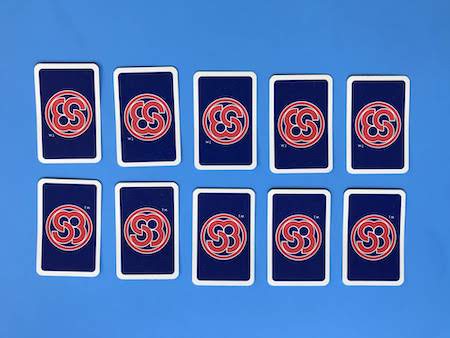
Players turn over any 3 cards.
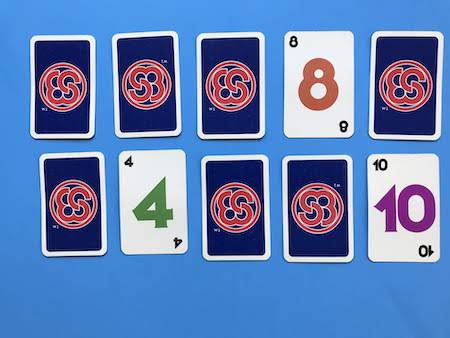
The remaining cards are placed face down in the middle of the table. This is the community draw pile.
Scoring
Cards 7, 11, or Skip-Bo are wild cards. They are worth zero points. The points on the other cards equal their face value so if you have an 8 card it is worth 8 points.
Matching cards. If you draw a card that has the same value of a card that is face up in your ‘hand,’ use it to replace the card that is either above or below the card with the matching value. The score of the two matching cards is zero.
In the example below, the matching 4s, 5s, and 8s are worth zero points because the value of the card in the top row equals the value of the card directly below it. The Skip-Bo and 11 cards are worth zero points. So the final score for this round is 3 plus 1 which is 4 points.
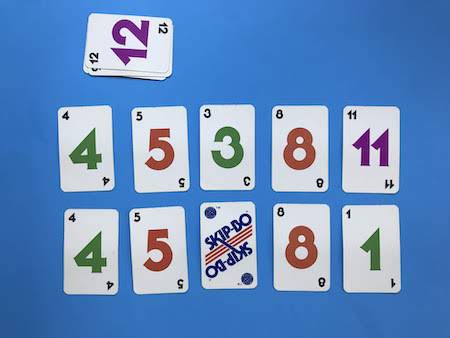
Double matching cards. If you have two sets of matching cards that are side by side, you subtract 20 from the score for that round.
In the example below, the matching 8s are worth zero points. The Skip-Bo and the 11 cards are worth zero points. Add 3 plus 1 to get 4 points. Subtract 20 points (for the double set of matching 4 cards) to get a minus 16 points for your score for that round. (People can have a negative score.)
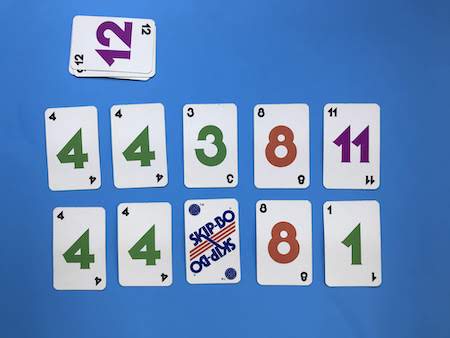
Triple matching cards. If you have three sets of matching cards that are side by side, subtract 30 points from your score for that round.
In the example below, the matching 8s are worth zero points. The 11 is worth zero points. The 1 is worth one point. The triple sets of matching 4s equal a minus 30 points so the score is a minus 29 for that round.
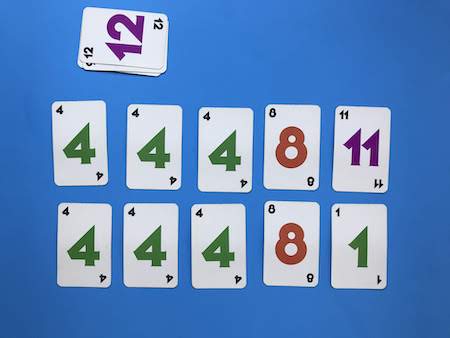
Quadruple matching cards. If you have four sets of matching cards that are side by side, subtract 40 points from your score for that round.
Ripple. If you draw a card that matches one of your cards that is face up and the card either above or below it is still face down, exchange the card that you drew with the face down card.
When you turn over that face down card and see that it matches another card that is face up and there is a card either above or below the matching card that is face down, exchange the newly turned over card with the card either above or below the matching card that is face down.
You can continue to ‘ripple’ as long as the card that you turned face up can be exchanged for one that is face down. (You cannot exchange a card that was turned face up with a card that is already face up.)
Here’s a very short video clip that demonstrates a ripple.
Okay. Now let’s look at how to play this card game!
Determine how many rounds you will play.
The first player takes a card from the community draw pile. She may exchange it with one in her ‘hand.’ If she doesn’t want the card that she drew, she places it above her rows of cards. This is her personal discard pile.
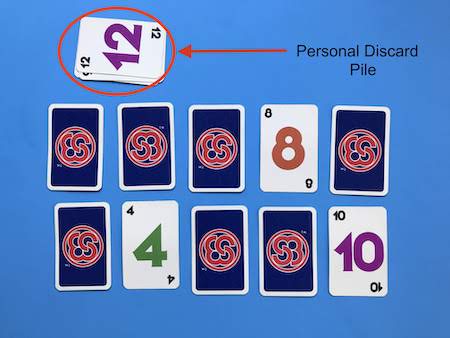
The player to the left goes next. That person can take a card from the community draw pile or from any other player’s discard pile. If she draws a card and doesn’t want to use it, she places it in her personal discard pile.
After she has finished her turn, play goes to the person on her left.
Play continues until one player has all of her cards turned over.
The remaining other players get one more turn.
That is the end of the round. Players add up their score. (You add up the players’ scores after each round.)
Continue until you’ve played all of the number of rounds that you have decided upon. The winner is the person with the lowest score.
Here are directions that you can print up to use while you are playing the game.
You know, there will probably be lots of opportunities to have your grandchildren over to play this card game in the next little while — a Halloween party, at Thanksgiving, during the Christmas holidays, New Year’s EVe.
I hope you have loads of fun playing this game with them!
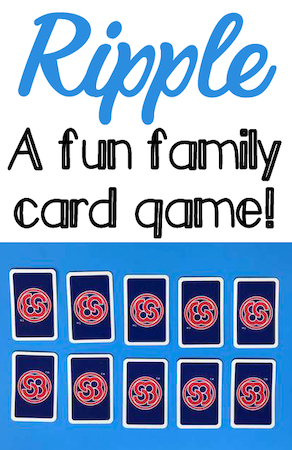




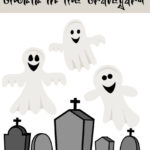
13 thoughts on “Ripple A Fun Family Card Game”
So I pulled a card from center it matched a card I had so I flipped the one and it was a joker. I had 3 sets closed nothing else open. Did I have to discard the wild or could I flip one of the other cards
You can to ‘ripple’ as long as the card that you turned face up can be exchanged for one that is face down and matches one of your cards that is face up. (You cannot exchange a card that was turned face up with a card that is already face up.) If there isn’t a card that is already face up and has a card face down either above or below it, you’ll have to discard the wild card.
If you draw a 0 point card from the deck, can you replace a face up card with it? If you draw a 0 point card from the deck,and turn over another 0 point card from your cards, do you have to discard one of the 0 point cards or can you turn u another down card and use the 0 point card?
You can definitely replace a face up card with a card drawn from the deck that has 0 points!! That 0 point card is not affected by the card that it replaces. However, if the card that you just replaced was face up, you have to discard that replaced card. If it was face down, it can be ‘rippled’ as long as it fits the ripple rules.
If the card that you just replaced was face down and also happens to be a 0 point card, you can ONLY use it IF there is a card that is EXACTLY the same and IF it has a face down card either above or below it.
For example, if the card that you turned over was an 11 card, you can ONLY use this newly turned over 11 card IF there is another 11 card ALREADY FACE UP and IF the card above or below it is face down.
If there ISN’T an 11 card already face up, you’ll have to discard that newly turned over 11 card.
If there IS an 11 card already face up but the card above or below it is ALREADY TURNED UP, you’ll have to discard the newly turned over 11 card.
I hope this helps!
Question: At the end of a hand and you have cards that are still face down, you turn them over and count the points. If you have two cards that are face down, when turned over there is a pair (example) two sixs, is this scored 0 or 12?
If one six is directly above the other six, it is scored as 0 points.
We have questions about wild cards:
1. Can wild cards be used for a block party In scoring?
2. If you turn over a wild card, can you ripple it?
We couldn’t find either of these addressed in any rules and For house rules decided to say no to both to make the game a little more challenging.
I’m not sure what you mean a ‘block party in scoring.’
Wild cards can be played one above the other. You can have any combination of wild cards when just one wild card is placed above one other wild card. The score for that would be zero.
However for double or triple matching cards, they all have to be the same wild card. For example, you can have 4 matching Skip-Bo cards. This score would be a minus 20. You can have 6 matching Skip-Bo cards and the score would be a minus 30. So for the double or triple matching cards, you can NOT mix 7s, 11s, or Skip-Bo cards. Does this help?
Yes, wild cards can ripple wild cards!
Thanks! Yes, it helps!
Thank you for sharing!
Trying to get this right with my kids as we learn…. When rippling, if you turn over a “wild” that had been face down, you can place that anywhere, right? Like, under another card that is not a match? Would that include placing a wild where a face up card is or can you only ever replace a face up card in your hand with a card that is from the center deck or someone else’s discard pile at the beginning of your turn? (That would mean that you might end up having to discard a wild at then end of a round). So…. Maybe they are not “wild,” but “zero point cards?”
Hi Alexis,
When you turn over a wild card from the 10 cards in front of you, to ‘ripple’ it you have to have the exact same wild card that is already face up — and that matching wild card has to have a face down card either above or below it.
For example, if you turn over an 11 card from the cards in front of you and you already have an 11 card that is face up, you can put that newly turned over 11 card above or below the already face up 11 card as long as that already face up 11 has a face down card above or below it.
A wild card that is turned over from the cards in front of you cannot replace any face up card.
You can only replace a face up card in the cards in front of you with a card from the center draw pile or from another player’s discard pile.
Wild cards are wild in that when you draw one from the center draw pile or from another player’s discard pile you can put it where a face card down is. Or, you can put it above or below any face up card. Or, you can replace a face up card with it.
Does this help? Let me know if you need further clarification.
Best,
Nina
My granddaughter and I are learning Ripple. I have just a few questions about how to play. First, if you have a wild card showing, do you need to match it with a wild card or can the wild card match the card you put above or below it. e.g. wild card is turned up then can I have a 12 below it and have a match for zero points? Second after the first person have turned up all her cards and the others have taken 1 more turn do we count the points on the cards not turned up by the other players?
You do not need to match a wild card with another wild card above/below it but it’s good if you can because that equals zero points.
You cannot match a wild card with a numerical card for zero points. If you have a 12 card, you need to have a 12 card above it to match for zero points.
Yes, after the first person has turned over all of her cards and everyone else has had one more turn, the other players turn over all of the cards that are not face up. They count the points that are on those cards.
I hope this helps and that you and your granddaughter enjoy playing it!